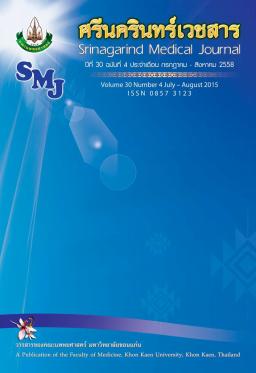A Morphological Study of Posterior Divisional Branches of the Mandibular Nerve in Embalmed Thai Cadavers
Keywords:
mandibular nerve branches posterior division, lingual nerve, inferior alveolar nerve, lower second molarAbstract
Background and objective: The mandibular nerve branches (MNs) are the important nerves which supply structures in the infratemporal fossa and oral cavity. Clinically, the nerve variations must be aware before maxillofacial surgeries. This study aimed to investigate morphology of the MNs posterior division in embalmed Thai cadavers.
Methods: Seventy corpse halves heads of fifty-fifth embalmed Thai cadavers were carefully dissected to observe the morphology of the MNs posterior division.
Results: The results shown that the distances from mesial and distal lower second molar to the LN were approximately 11.18 ± 2.78 and 11.16 ± 2.48 mm., respectively. Three distances between LN and inferior angle of lateral pterygoid plate, intersection point between inferior angle of lateral pterygoid plate and bifurcation of the LN and IAN were 7.52 ± 2.57and 10.71 ±3.38 mm., and distance between bifurcation of the LN and IAN to foramen ovale (FO) was 11.60 ±4.12 mm. This study found that two types of LN and IAN bifurcation, type I: 95.71 % and type II: 4.29 %. There were five types of communication between MNs posterior division and type I (LN and IAN) was mostly found (10%) in this study.
Conclusions: These results are the basic data that may be considered before maxillofacial operations and dental treatment.




